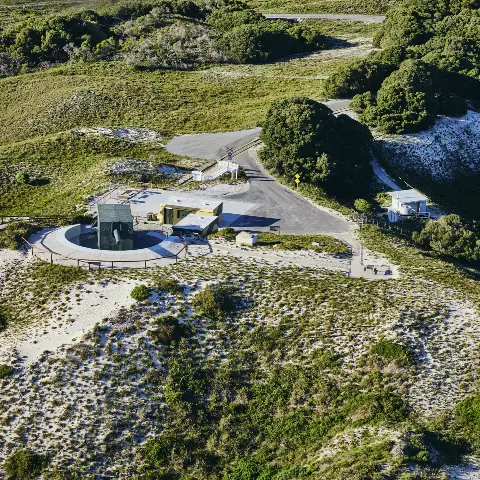Military and Maritime Heritage
Managing Rottnest Island’s military and maritime legacy
Wadjemup / Rottnest Island played a significant role in Australia’s defence during the First and Second World Wars, earning recognition as a site of immense historical importance. With rich heritage sites still standing today, the island offers visitors a unique opportunity to delve into Western Australia’s military history and the broader narrative of the country’s past during a time of global conflict.
The island has also been long intertwined with Western Australia's maritime history, serving as a vital entry point for ships navigating to the burgeoning Swan River Colony or to the port city of Fremantle. Shipwrecks that lie in the waters around the island are poignant remnants of this history, bearing witness to the island's significance as a key point of nautical navigation in the region.
The commitment to preserving Rottnest Island’s heritage is evident in its careful management, ensuring they continue to serve as enduring testaments to the island’s multifaceted historical significance. This includes supporting the interpretation and management of its lighthouses and military defence artefacts and sites which are integral to providing a comprehensive understanding of the island’s past.
Maritime history
The first recorded instance of European explorers making landfall on the island occurred in 1658. From Dutch sea captain Willem de Vlamingh landing in 1696—who gave the island the famous title of ‘Rats Nest Island’ which then became Rottnest—to the 13 or more unfortunate vessels that lie wrecked just off the coast, the maritime history of Rottnest Island is a fascinating one. Much of it is still evident today, including in the shipwrecks that rest in the waters surrounding the island such as Shark at Henrietta Rocks, or at the Pilot Boathouse at North Thomson Bay.
Our goal at Rottnest Island Authority is to engage with and promote this history, ensuring that future generations have the opportunity to learn the stories and misfortunes that occurred around Wadjemup’s waters.
Learn more about Rottnest Island’s maritime history
Military history
With its vantage point just off the coast of WA, Rottnest Island has played a key strategic role in the state’s defence planning.
During the First World War, it became an internment camp for 989 people of German and Austrian origin. In 1933, as political unrest reared its head again in Europe, it became the focal point of WA’s coastal defence matrix. The two naval gun batteries, constructed at Oliver Hill and Bickley Bay, are nationally significant heritage sites that demonstrate the role of the Australian Defence Force and Australian men and women in the Second World War effort.
There’s a rich military history to be explored on the island, and a key part of the Rottnest Island Management Plan (RIMP) is maintaining it.



